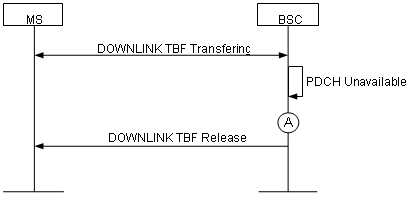Measurement Counter
A9109:DOWN_GPRS_TBF_ABNORM_REL_NO_CHAN_RES
Description
This measurement provides the number of downlink GPRS TBF abnormal releases due to no channel in a granularity period. A high measurement value is yielded because the channel malfunction is frequent or the channel is blocked manually. Refer to device alarms to locate the cause. Together with Number of Failed Downlink GPRS TBF Establishments due to No Channel and Number of Downlink GPRS TBF Establishment Attempts, this measurement indicates the congestion of the downlink GPRS TBF due to no channel in a granularity period. If a GPRS TBF congestion rate higher than 10% is mainly contributed by the downlink GPRS TBF abnormal releases due to no channel, the downlink traffic volume may exceed the system capacity or the CS traffic that preempts the dynamic channels is heavy. Check whether it is caused by equipment resetting or manual channel blocking. To guarantee stable PS service on the cell with heavy CS traffic, add fixed channels. The addition of fixed channel may affect the coverage of GPRS service, and thus it should be planned considering the whole situation.
Unit
Integer number or integer.
Measurement Point
If the PDCHs reach the specification limit, the PDCHs are released irrespective of the MS status. The downlink GPRS TBF that uses the PDCH as the control channel is also released. When the MS is in transmission state and the downlink GPRS TBF exists but no channel is available for the downlink GPRS TBF, the BSC releases the downlink GPRS TBF that uses the channel as the control channel. Figure 1 shows the procedure of downlink GPRS TBF abnormal release due to no channel. Each time the BSC abnormally releases the downlink GPRS TBF that uses the channel as the control channel because no channel is available (see measurement point A), the counter is incremented by one.

Formula
This is an original counter without involving any formula.